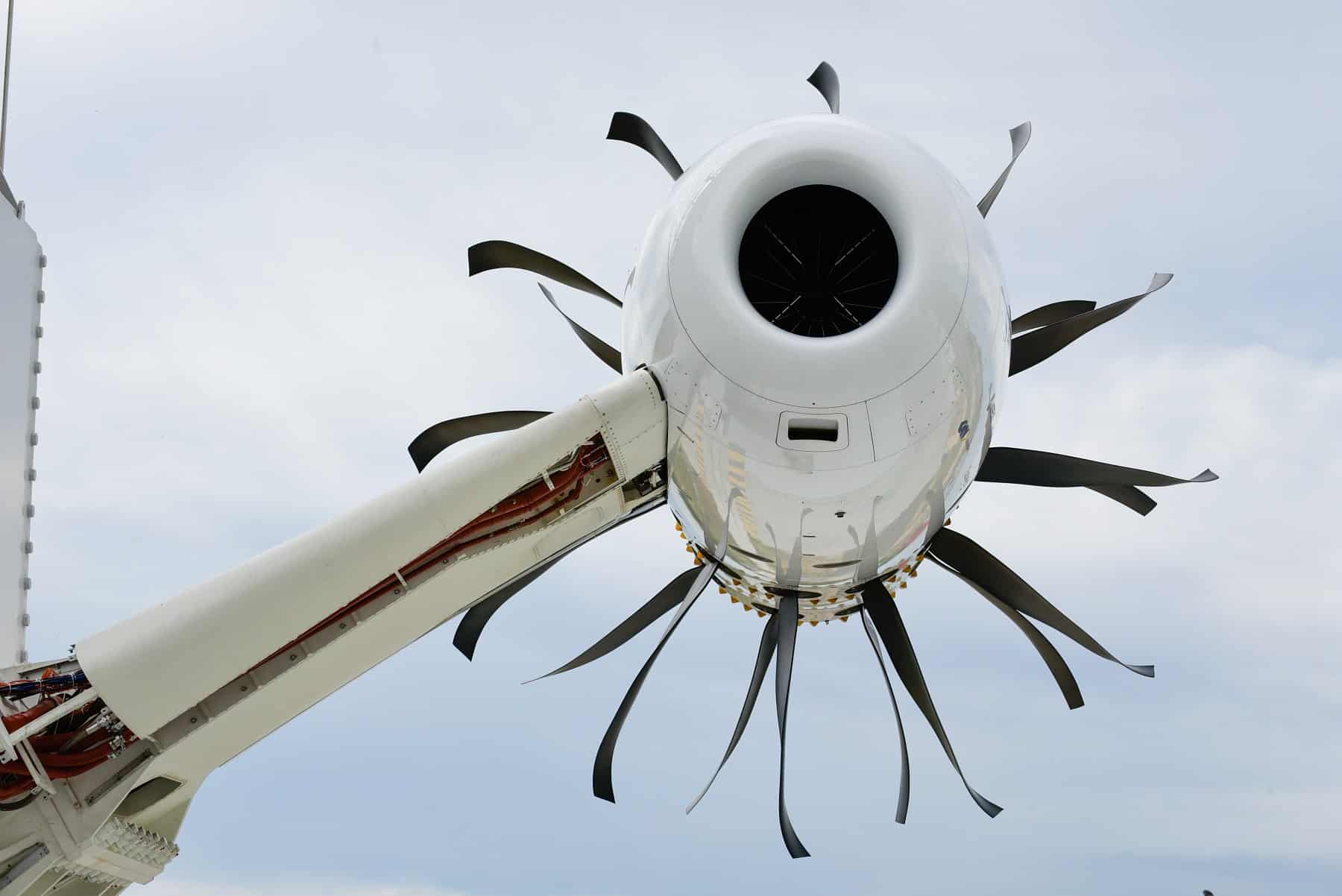Aviation Innovation - 2024-2050
Where will Aviation Innovation take us next ?
Our Industry needs Aviation Innovation.
We need to shout it from the rooftops… “We need the decarbonization of the Global Aerospace Industry”
It will take decades. The solutions are complex, hard to define and expensive. There are some real opportunities out there – but regulations, financial risk and slow moving governments will hold us to task. Innovators couldn’t care less. This needs to be done and we will do it. And those challenges? We welcome them because they keep us on track for the real goal. Safety.
In 2009 aviation agreed to a set goals that basically commits to halving emissions by 2050 (based on 2005 data). There is a direct link between aircraft emission reduction and improvement in propulsion, material, aerodynamic and structural technologies. Engines offer the greatest hope and we have seen the OEM’s deliver in recent years. The B737Max and A320Neo improve on their predecessors by 20%. On the long-haul, A330Neo and the B777-9 will improve on earlier models by 10%.
Research initiatives are developing new engines. The US national research program (CLEEN – Continuous Lower Energy, Emissions and Noise) has shown a further 20% in fuel burn reduction. Europe’s Clean-Sky 2 Joint Technology initiative has helped bring about the Open Rotor Concept which can deliver 30% and testing is ongoing in 2023.
Aircraft Re-Design & The Blended Wing
Let’s start with the big picture. There is a need for a revolutionary aircraft (and engine) redesign in aviation. Our CO2 emissions commitments and the travelling public demands it. We can do it, but it will take time. Why? CO2! Yes and your safety.
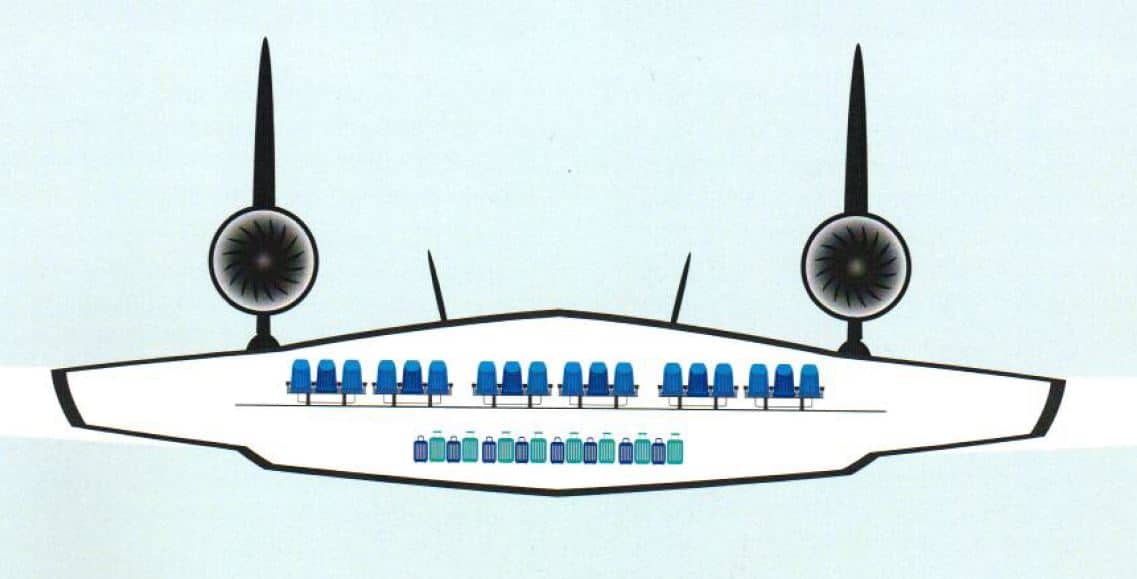
There’s a section below on the drone delivery page where we highlight the fact that the FAA has (rightfully) been sticky with the Amazon folks when it comes to flights over “roads and people”. It seems as if the explosion of enthusiasm over drone deliveries has died down at the biggest logistics firm there is. Which is a shame. But this happens. New technology and capability comes first, at a cost. Then regulators and law makers come in and spoil the party as they try correctly ask designers and builders to follow the rules that Boeing and Airbus do.
If you can reduce the effects of Lift-dependent drag and skin friction you can improve an aircraft aerodynamic efficiency. BWBs (Blended wing bodies) and Strut-braced wings have been studied for decades and we have B2 bomber which is a real product of that development. Add to that recent improvements in composite technology, such as the fuselages of A350 and B787 aircraft, could also reduce weight and fastener protrusion into airflow. Research into structural components using composites and new metal alloys will also reduce weight, some say up to 10% of current aircraft.
And that’s not all. These new improvements can sometimes be retrofitted onto older aircraft types during heavy maintenance. Newer engines can also be modified for use on older fuselages. If we plan correctly.
Aviation Technology & Artificial Intelligence
Within Europe there is a Group called the Fly Ai Group. If you fly over there you can see a whole bunch of webinars and information about AI and how it can be applied to aviation solutions. From Airbus to EASA to NATO, they have the top tier of entities within the group. There is a number of examples of where AI is helping us do better at flying aircraft.
Within Europe there is a Group called the Fly Ai Group. If you fly over there you can see a whole bunch of webinars and information about AI and how it can be applied to aviation solutions. From Airbus to EASA to NATO, they have the top tier of entities within the group. There is a number of examples of where AI is helping us do better at flying aircraft. In the meantime here’s our artificial Intelligence Case Study
Ryanair and Optifly.
in 2019, around the start of the COVID pandemic, Ryanair were looking into new approaches that would take them to 230 million passengers by 2026. Now those of us in the know, know that there is virtually nothing that would separate Ryanair from a euro dollar. And those witty go-getters over in Swords, Co. Dublin figured they could use AI. Why?
Well FR have 500+ aircraft, 4 airlines (AOCs), 90+ bases, flying to 230 airports with over 3000 flights. Layer over that maintenance, ferry flights and a little bit of the ‘ol yield management and you’ve got a casserole of potential confusion. Enter Optifly.
What they asked them to do was to analyse the scheduled and see where the current fleet was underutilised. Optifly’s secret AI sauce was able to run what amount to “alternative” schedules in a kind of simulation where schedulers could play around with certain constraints so try to improve things. They rolled out the software on their Italian fleet in 2022 and I guess they liked what they saw.
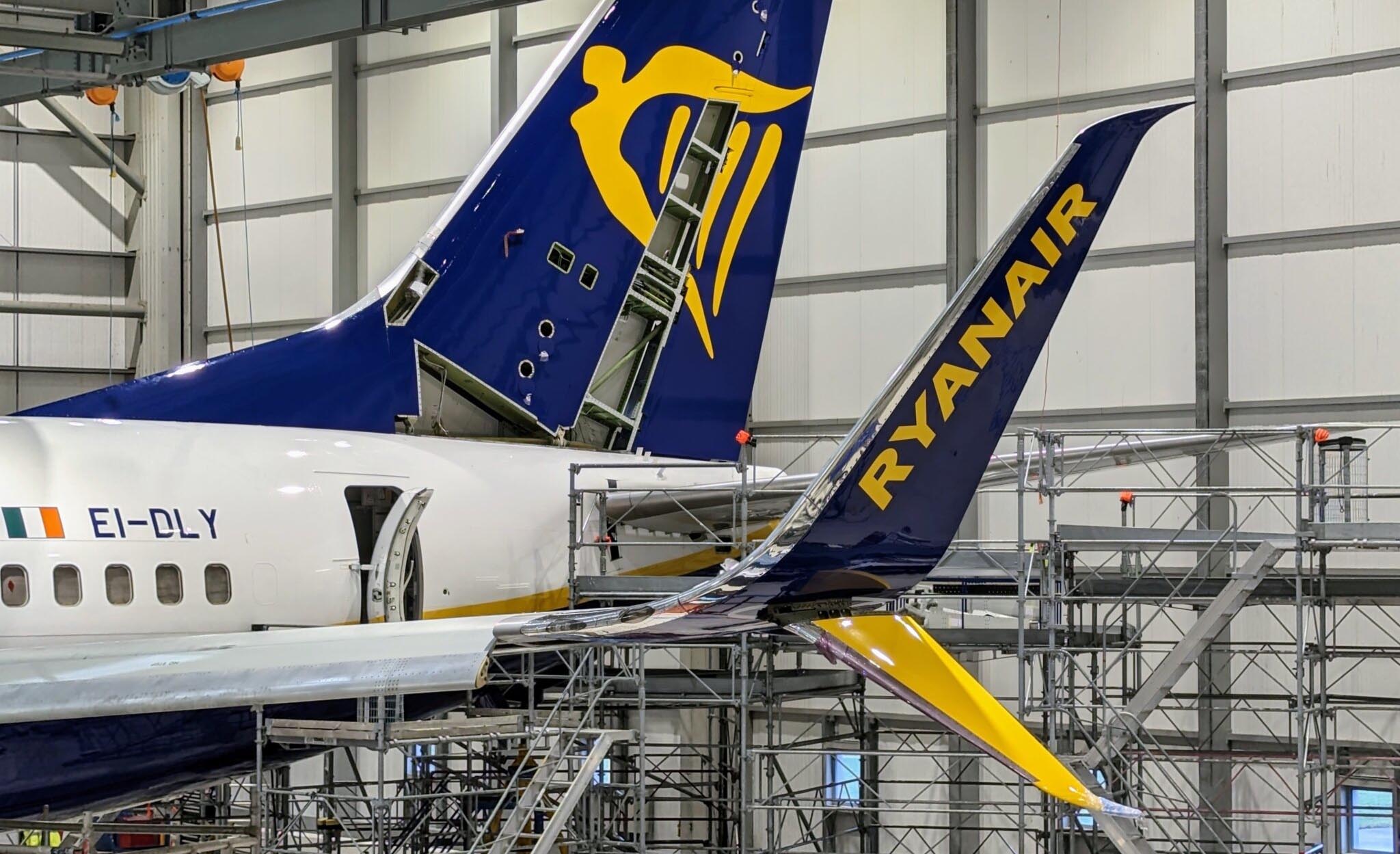
"The current approach of building schedules twice a year is dead. We're going to move to a much more optimized, agile, AI-driven model that allows airlines to rapidly respond to developing trends in consumer demand"
Michael Healy - Ryanair
Are you listening Willie Walsh at IATA? Or those ATC guys over at EUROCONTROL and the FAA. AI to monitor and maximise assets in real time. Sounds like a whole load of cost-saving (not to mention CO2 saving) to us.
By running these scenarios daily. Yes, Daily. Ryanair allegedly improved seat capacity on the Italian market by 38% in 2022 versus 2019. The marketing information we read revealed that Optifly also increased capacity over at Eurowings by a more modest 10%. So what’s the hold-up? It seems there is still a lack of trust in AI for such critical tasks but also a lack of implementation skills amongst the stakeholders. We get that. But our feeling is that AI is here to stay. And every kilo of CO2 saved by a software system is step forward to 2050.
New Propulsion Systems
SAF Level
Net Zero by 2050. So, ZERO effect of CO2 emissions on the environment by aviation by that year. How are we going to put this ambitious vision into practice? Simply, Industry and governments and airlines need to come together and with a plan for air and ground energy that is 100% different to the the one we have today. This all starts with SAF, sustainable aviation fuel.
The vast majority of aircraft CO2 (and NOX) emissions arise from the use of Kerosene we call Jet-A1. To remove this “tailpipe” emissions completely, we need a range of solutions including Hydrogen and electric batteries. But these options require us to completely redesign the aircraft as well as aviation infrastructure such as airport fuelling depots. Realistically, these things won’t show up until 2050 or later.
SAF is available today but we have huge availability and scalability challenges. But the regulators don’t seem to care. Mandates in the EU have started low but will tighten once we hit 2030. Regulators are leading the charge, demanding that EU airports have 2% SAF by 2025, increasing every 5 years until we (hopefully) reach 63% by 2050. Some countries have more ambitious plans, like Sweden, Norway and France. The US instead has set a SAF production target. 3 Billion gallons per year by 2030 that includes tax credits and R&D budgets. But some states want more. California just passed legalisation mandating that SAF will comprise 20% of aviation fuel by 2030.
Sustainable Aviation Fuel Pathways
| SAF Pathway | FeedStock | Emissions Reduced | Pros / Cons |
|---|---|---|---|
| HEFA - Hydroprocessed esters and fatty acids | Used fats. Oils. Greases refined into fuel (HEFA-SPK) | Could reduce GHG by up to 80% (Life cycle basis compared to fossil fuels) | Pros: Mature Tech widely used. "Cheapest" of the SAF types. Cons: Feedstock availability issues. Vulnerable to supply chain pressures. |
| ATJ - SPK - Alcohol to Jet Synthetic Paraffinic Kerosene | Alcohols like Ethanol & Butanol are de-oxygenated into fuel using a patented process | Could reduce GHG up to 80% (Life cycle basis compared to fossil fuels) | Pros: Mature Technology / Capital easy Cons: High "opportunity cost" to sell to alternate modes (road) |
| FT-SPK & FT-SKA - Fischer-Tropsch Processed | Municipal solid waste and forestry waste are converted to fuel with a patented process | Could reduce GHG by up to 80% (Life cycle basis compared to fossil fuels) | Pros: Higher blend rates with JetA1 possible Cons: Feedstock availability issues & supply chain issues. |
| CHJ - Catalytic hydrothermolysis Jet fuel | Plant & Algae Oils converted to fuel by hydrothermolysis | Could reduce GHG up to 80% (Life Cycle basis compared to fossil fuels) | Pros: Suitable for Wet Biomass processing Cons: Technology immature |
| PTL - Power to Liquid | Ultimate renewable energy - Water and Carbon converted to fuel via electrolysis | PTL fuels (eFuels) could reduce greenhouse emissions by 90% | Pros: Huge supply / Feedstocks. Very clean fuel Cons: Energy intensive. Requires clean electricity & Carbon capture |
The Dominant SAF feedstock is Vegetable oil. Either Virgin or waste oil from cooking. This is known as HEFA and is the simplest and cheapest form of SAF. Below is are other SAF pathways…
There is something else. Synthetic fuel. Also called e-fuel. These PtL (power to liquid) fuels are produced using low-carbon hydrogen which is produced from biogas or renewable (or nuclear) electricity electrolysis and captured CO2. In theory, e-fuels have a far better supply potential that SAF. This is because electricity and CO2 are not restricted by feedstock availability in the same way as SAF is. The problem is that e-fuels are highly energy-intensive to manufacture. But PtL offers the greatest opportunity for decarbonisation at the scale that these regulators demand. It produces a high energy-density fuel that is scalable (and cleaner) that all SAF types. As long as we ensure the power needed for PtL conversion is also from low-carbon courses.
Power to Liquid (PtL)
If you want to look closer at the PtL area here are some real-world R&D examples happening right now.
Aviation Industry VTOL Aircraft and Verti-Ports
Yes they are coming. When will you or I see them regularly, or take one from my street to JFK Airport along with my family and bags. Hard to say. Like all things there is always a FMA, “first mover Advantage”. Those who arrive at the finishing line get laurels, but also firm orders from big airlines.
Top 5 Key Challenges for eVTOL & UAM
1. Infrastructure – Vertiports. Air Traffic Control. Unmanned Traffic Control
2. Public Acceptance – NIMBY (Not in my Backyard). Safety. Noise. GDPR.
3. Technology – Batteries. Motors. Certification. Redundancy.
4. Flying – Pilots. Autonomous.
5. Standard and Regulations – FAA. ICAO. EASA.
I also want to highlight Vertical Aerospace. These guys are well funded, have the very best of pedigree when it comes to certification they seem on the cusp of both DOA and POA approvals. If you are an investor or holder of shares. You really should knows these two acronyms.
Sustainable Taxi and Ground Operations
We need all ground vehicles at the airport to be Green. For baggage trolleys, fuel bowsers and vans and trucks that’s easy. They will all be electrified lickety-split. So we need to concentrate on Aircraft taxiing.
The Industry authority on Engine Emissions is the International Civil Aviation Organization (ICAO). ICAO reports the emission levels of every engine in every phase of flight. Commercial aircraft engines are designed to operate at maximum efficiency during cruise. Thus, when idle or taxing these large turbofans are highly inefficient and for the vast majority of short-haul flights – 2 hours and under – 35% of the CO2 happens on the ground.
One issue we have is airport congestion. At taxi-ways, at the terminal and on runways. This is when the aircraft is stopped getting to its next stage and the engines have started. It’s not uncommon for 15-20 aircraft can be in a queue and taxi times can be 20 minutes or higher. Taxi back in is nearly always shorter as we don’t have the engine start procedures and the complex push-back procedure. EUROCONTROL are tackling this problem with CONOPS (Concept for Operations) – where we replace the taxiing power demand with something that is not engine power.
Alternative Taxi Systems – These are systems that can be described as sustainable as they enable us to taxi aircraft to and from the runway without using the main engines. Thus an automatic saving of 35% of CO2 and NOx emissions. Here are the three front-running systems
TaxiBot
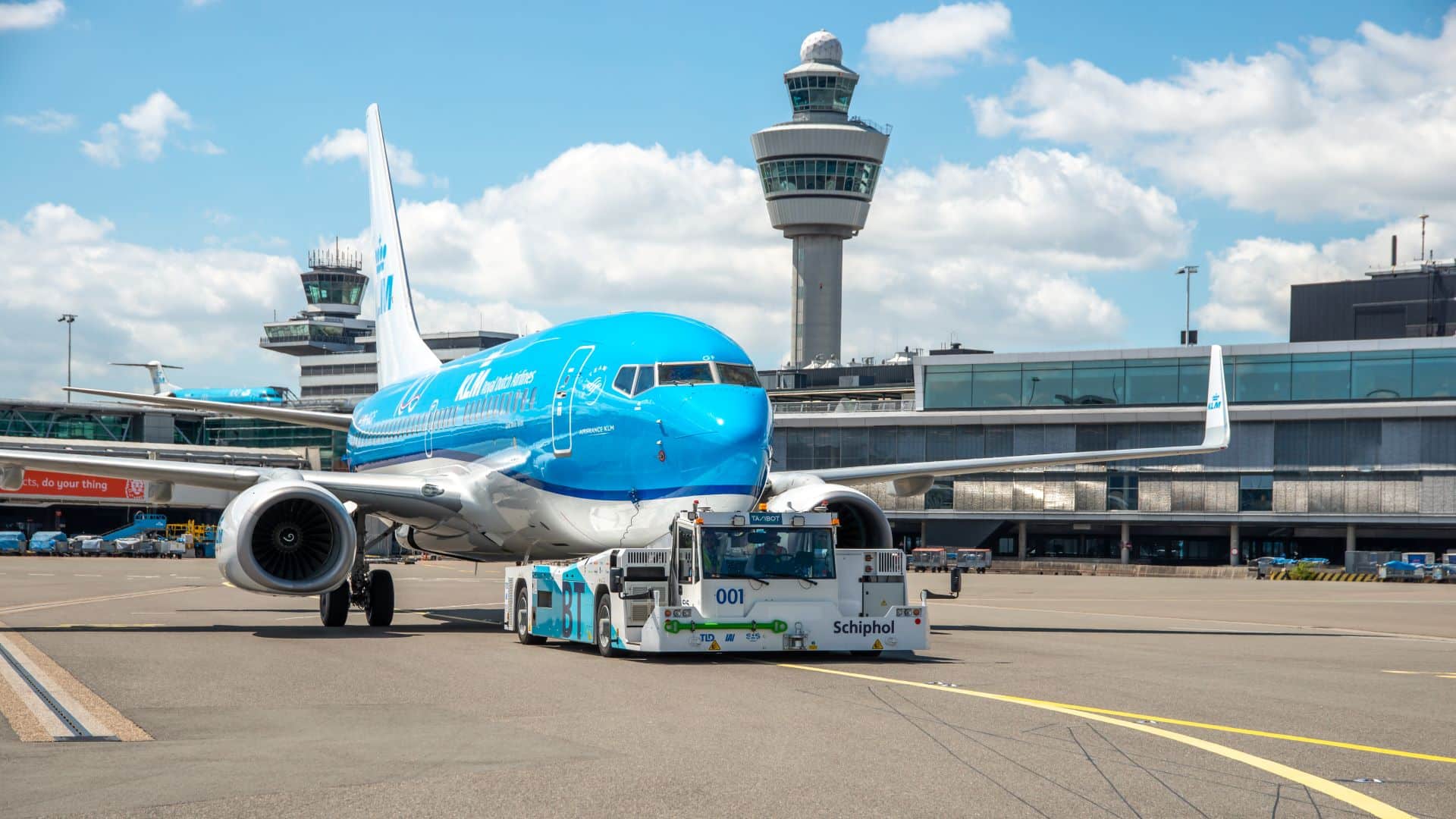
Designed by Israel Aircraft Industries (IAI) this is a modified push-back tug/truck that transfers control over its power and function to the pilot of the aircraft. The nose-wheel sits into a cradle and, much like a high-tech skateboard, the aircraft uses it to get to the runway. Taxibot then makes its own way back to the terminal.
WheelTug

Another system/process is to apply power to the Nosewheel and cause it to turn using another motor. This motor is installed between the two nose-wheels and is powered by the on-board APU. Yes it’s power is derived from Jet-A1 burned fuel in the APU, but its a huge saving over using the main engines.
Green Taxi Solutions
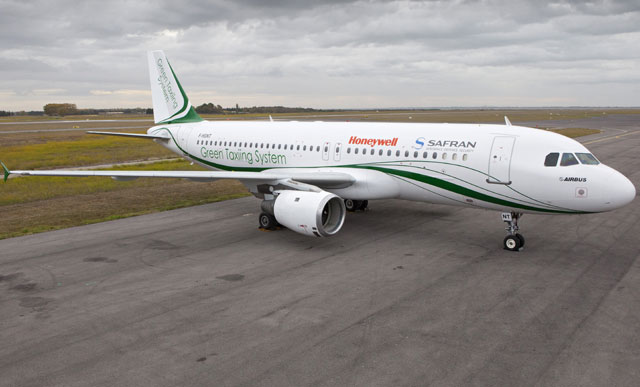
Using a self-taxing technology patent from Safran, L3 and Honeywell, this is very similar in design to the WheelTug system. Installing a 3rd party electrical motor between the two nose-wheels and installing an (STC approved) cockpit control system for pilots.
Air Traffic Control System Automation
Good news! We have a whole article on how the Air Navigation Service providers can improve their efficiencies just by working together.
Aviation Industry ESG
We have a complete page on ESG. Please check that out. We also have a page on United Airlines and their exceptional work on all three areas and the merits and awards they have achieved. In terms of aviation ESG it really comes down to the Airlines, the Aircraft Lessors and the OEM’s (Aircraft and Engine Manufacturers). Because they control the CO2 story and how it develops. Everyone else is just reacting to them. If Greenwashing happens – it will happen at this top level. Yes people care if electric carts ferry bags and people around the terminal – but our future depends on the conversion of fuel to power and what that is financed and delivered.
All we can do is point you in the right direction. Like United, we want to highlight the pioneers in the field (Like United, the FAA and other industry titans like Domhnal Slattery of Avolon/Vertical Aerospace).
Top 5 Aviation Sector R&D Initiatives
Regulators and Innovation
Innovators ignore regulators. At least in the beginning. Why? because they must. Screenwriters don’t consult production managers about how their space battle will be staged in CGI when they are crafting their story. Otherwise they wouldn’t even start.
Innovators are the dreamers. And we need them. We won’t find those holy grails of sustainability without them. Regulators are the reality check. And we need them too.
In 2003 Jeff Bezos predicted that fleets of autonomous drones would be operating within 5 years. In March 2023 the biggest logistics company in the world (Amazon) has two “test” markets using very limited operations. College Station in Texas and Lockeford, CA. A town with a population of 3,500 people.
"Roads & Folks"
We all know about the “last-mile” challenge faced by delivery trucks and so we can kinda get behind systems that save gas. But if you’ve already read our section on VTOL and the UAS, you know that Johnny and Mary Public do not want these systems flying over them, their property or potentially have cameras.
After years of preparations and thousands of sign-up’s the reality (according to CNBC and the Insider) is that the FAA has restricted operations so that roads and people/property are not traversed by the drone. According to these reporters Amazon reported to the FAA in 2022 that their newer MK27-2 drone has significant safety upgrades and that “conditions and Limitations” on drone operations should be removed. The Agency disagreed, saying that Amazon had failed to display full durability and reliability parameters.
